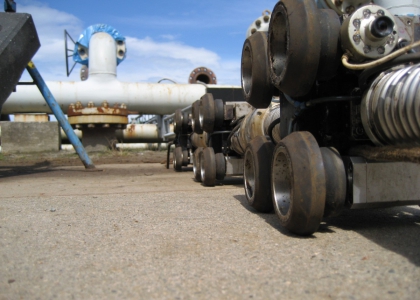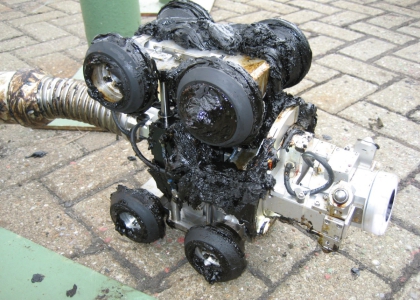Since around the middle of the 1960s salt caverns in Germany have solution mined in horizontally layer thick salt layers as well as in salt domes with up to 2000 m deep borings.
Average caverns are quickly up to 300 m high with diameter of approx. 60 metres. This corresponds to a volume of 500,000 to 800,000 cubic metres. They serve as interim storage locations for crude oil, crude oil products and natural gas to cope with peak loads or to buffer up supply bottlenecks in times of crisis.
In Blexen on the North Sea the company Untertage-Speicher Gesellschaft mbH of Wintershall Holding AG maintains eight caverns for storing crude oil and petrol. These are connected to different up to 500 metre-long pipelines with a central manifold. One pipeline conveys the product the other the salt solution.
The salt solution pipelines are covered on the inside with an epoxy resin and have a diameter of 250 mm. In July 2007 they were visually inspected from inside for defects as well as for damage to the coating together with Applus RTD over a total length of approx. 4.5 km.
A case for INSPECTOR 4000
The video and laser inspection robot INSPECTOR 4000 was used, which was able to meet the challenges posed by the pipelines lengths (up to 500 metres), numerous bends and differences in height.
A cable was developed especially for this with the Swiss company Brugg. Specially adapted for the inspection robot it also defied the raw environment conditions.



